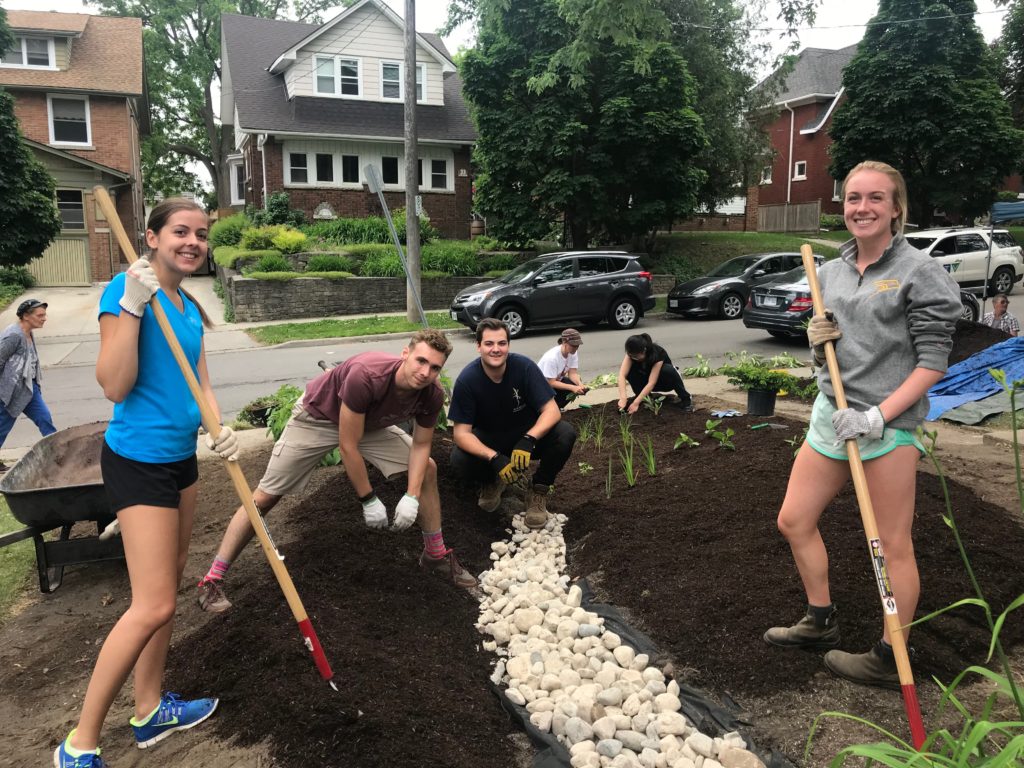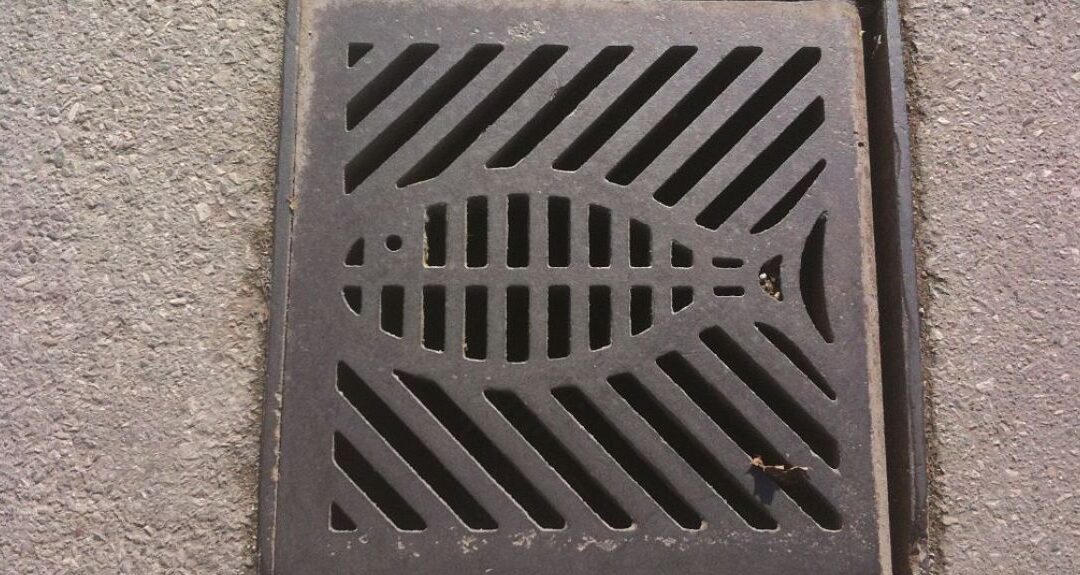The use of a fish or other aquatic species on storm drains aims to get you thinking about your connection to local waterways.
Many community residents are not familiar with how stormwater is managed in our neighbourhoods. Being aware of the journey of stormwater and taking appropriate action can help keep our local water bodies, including streams, rivers and lakes, healthy and safe.
What happens to stormwater when it rains?
In undeveloped and nature-rich areas, most rain and meltwater is absorbed into the ground by vegetation. This means only a small amount of it runs off directly into nearby streams and lakes.
In urban areas, there are many more hard surfaces like roads, parking lots, and buildings that prevent the water from being absorbed into the ground. This water from our yards, driveways and sidewalks flows directly into storm drains or catch basins.
Where does stormwater go?
Did you know that the stormwater drains on your street typically have outlets straight into local waterways, like ponds, streams and lakes?
As rain and snowmelt flows over surfaces on its way to storm drains, they can pick up and transfer pollutants on the pavement and lawns directly into the natural environment, without treatment!
Substances like soap, oil, fertilizer, pesticides, litter, and pet waste are deposited into waterways, undermining drinking and swimming water quality and harming aquatic life.
Further, the rapid movement of stormwater from streets to streams is a major factor increasing urban flood risks.

People building a rain garden
How can I help manage stormwater?
The choices we make when doing things on our properties, driveways and streets have direct impacts on the health of our waterways and the organisms that call them home.
Here are a few actions you can take to keep your local waterways safe and healthy.
Plant a rain garden
Rain gardens and other permeable surfaces help soak up rain that flows from hard surfaces, reducing runoff into drainage systems. Rain garden plants help infiltrate the water back into the soil and remove pollutants from the water. Learn more about designing and maintaining rain gardens.
Reduce fertilizer and pesticide use in your yard
These chemicals are washed away during rain events and can cause negative impacts to water quality. Consider alternatives to traditional fertilizers such as top dressing with compost which will slowly release nutrients to your lawn over the summer.
Time your fertilizer application
You can also help by timing your fertilizer application, so it does not coincide with a heavy rain event. Also, remember to sweep up any excess fertilizer that ends up on your driveway or sidewalk.
Prevent storm drains from clogging
If you notice any garbage when you are out on a walk, pick it up before it can be washed away and clog the storm drains!
Dispose chemical substances the proper way
Make sure you dispose of soaps, paints, and other chemicals properly. Don’t forget that storm drains lead directly into waterways, so please don’t dump anything down the drains!
Get a Rain barrel
Rain barrels can help you collect rainwater that can be used to water gardens and lawns, clean garden tools, and wash cars. They can last you a long time if maintained properly.
Green infrastructure is another effective tool that can help restore the urban water cycle and manage rain where it falls. Incorporating strategies like rain gardens, permeable pavement, and urban forests can help manage runoff and limit what flows into storm basins.
Want to know more? Check our rain management resources.

Recent Comments